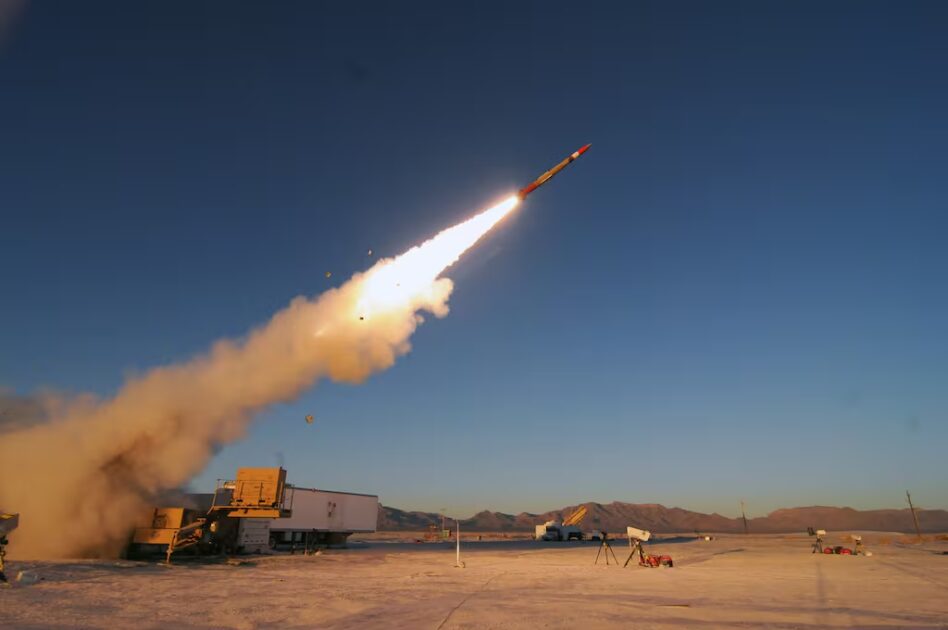The Pentagon has a serious case of missile madness.
On Monday, The Wall Street Journal reported that the Department of Defense is pressuring missile manufacturers to double and, in some cases, quadruple missile production, including by holding weekly calls with company executives through a new Munitions Acceleration Council.
However, the industry is going to need a lot more than phone calls to make things run faster. Some big-time bottlenecks—in the supply chain and in Congress—are going to make the Pentagon’s lofty goals very, very hard to meet.
Booming to bust: To beat a dead horse: The US has a missile production problem. Supply chain issues, production delays, and delivery timelines (not to mention appropriation limitations) in the missile industry have been thoroughly fleshed out in think tank war games after war game.
In a 2023 CSIS report, nearly two dozen iterations of a war game simulating a US-China conflict showed that the US can expect to launch over 5,000 long-range missiles within the first three weeks, which is a heck of a lot more than the US defense industrial base can keep pace with.
Since then, we’ve encountered even more reason for concern. In the brief “Twelve Day War,” defending Israel from Iranian missiles, the US launched an estimated 100-150 THAAD interceptors (nearly a quarter of those ever purchased by the Pentagon) at a cost of nearly $500M, not to mention the hundreds of Tomahawks and other strike missiles expended in Yemen, Iran, and elsewhere by the US military.
That’s on top of the soaring use of pricey interceptors, including US-supplied Patriots, used by Ukraine to defend against Russian missiles, which have since conveniently adapted to evade Patriots more effectively.
Production problems: That rate of use way, way outpaces both production capacity and the funding the Pentagon requested and Congress appropriated over the same period, which the industry is kinda banking on to meet demand. TL;DR, we’re in a bit of a missile pickle, and the Trump admin wants a way out.
“President Trump and Secretary Hegseth are exploring extraordinary avenues to expand our military might and accelerate the production of munitions,” Pentagon spokesman Sean Parnell told the WSJ. “This effort has been a collaboration between defense industry leaders and senior Pentagon officials.”
But here’s the thing—you can’t just manifest missiles.
Fast and furious: To be fair, manufacturers have rushed to pump out more of the things that go boom. Lockheed, which hit production records of PAC-3 MSEs (Patriots) last year and is on track to produce over 600 this year, won a whopping $9.8B multi-year contract to produce 2,000 Patriots earlier this month. Northrop Grumman also opened a new Missile Integration Facility in West Virginia to boost production last week.
However, doubling or quadrupling output is a different ball game, especially given some big bottlenecks for some pretty critical components:
- Solid rocket motors (SRM), the things that make missiles go fast and far, are a big chokepoint and headache for missile makers and the DoD alike, not least because the industry is hyperconsolidated between Northrop and L3Harris.
- Seekers, which guide the missiles, are super underproduced. Boeing, the subcontractor for the PAC-3 interceptors, is hitting production records this year and last, but delivered just 500. Last year, that caused some big production delays in Japan, per Reuters.
- Microelectronics and critical minerals used in the missiles are deeply tied to foreign supply chains, particularly one big China-shaped producer, according to a July GAO report.
- Propellant: Northrop, which makes the rocket fuel for the Pentagon’s most powerful missiles, has struggled to make deliveries, despite a new factory that opened last year. They also rely on a single-source supplier for a lot of the ammonium perchlorate needed.
New friends: So, what is the solution here? Many people in our little defense tech world would say, “Startups.” Ursa Major, X-Bow Systems, and Anduril have all started pumping out SRMs to meet the soaring demand, and Firehawk has cut production time of the energetic material used in the motors. Necessity is the mother of invention, as they say.
The Pentagon and missile makers have taken note:
- X-Bow Systems won a big-time $191M contract last Friday for “Advanced Integrated Motor Manufacturing,” funding X-Bow’s design, production, and demonstration of advanced solid rocket motor propellant. Also on Friday, Raytheon won a $160M contract to source SRMs and warheads for the AIM-9X missile.
- Ursa Major teamed up with BAE Systems last month to test and add its 3D-printed SRMs to BAE’s APKWS guided missile.
- Anduril opened an SRM production facility in Mississippi in August that it says will be able to produce 6,000 tactical motors per year by the end of 2026. Anduril was also tapped by Saab to provide SRMs for Saab’s GLSDB long-range precision munition in June.
The startup spice in the missile supply chain is a very welcome change, but it remains to be seen whether primes and startups alike can develop, test, and scale production quickly enough, especially before a missile-intensive invasion of Taiwan.
But given the Pentagon’s big-time demand signals (again, that’s gotta be backed up by some big-time cash), startups working on fixing the missile production crisis can expect some suitors from the industry and Pentagon. The missile madness isn’t going away anytime soon.

